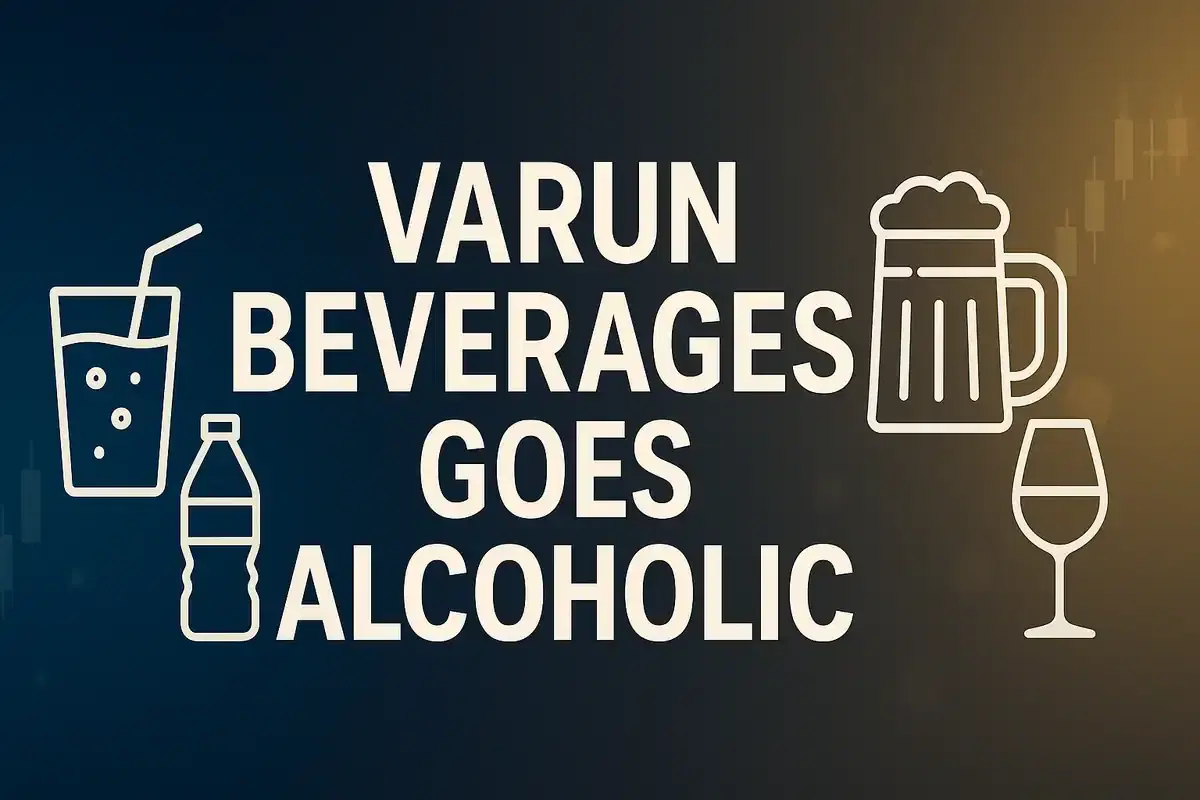Varun Beverages Ventures into Alcohol Market, Partners with Carlsberg for African Distribution
Consumer Products
|
29th October 2025, 2:34 PM

▶
Stocks Mentioned :
Short Description :
Detailed Coverage :
Varun Beverages, a major bottler for PepsiCo, has made a significant strategic move by entering the alcoholic beverage market. The company has amended its Memorandum of Association (MoA) to officially include the production and distribution of alcoholic drinks, such as beer, wine, whisky, brandy, gin, rum, and vodka, for both Indian and international markets.
In conjunction with this expansion, Varun Beverages has formed a distribution partnership with Carlsberg. Initially, some of its African subsidiaries will pilot the distribution of the Carlsberg brand in their respective territories. Analysts view this diversification as a critical strategy to counter the seasonal nature and weather-dependent demand of its primary carbonated beverage business. Ravi Jaipuria, chairman of Varun Beverages, stated that this entry into alcohol will allow the company to leverage the long-term growth potential of ready-to-drink (RTD) and premium alcoholic beverages. Furthermore, industry experts anticipate this diversification to be margin-accretive, promising higher profit margins.
In the September quarter, Varun Beverages posted a 19.6% year-on-year profit growth to Rs 741 crore, while revenue saw a more modest increase of 2.3% to Rs 5,048 crore, attributed to prolonged rains in India. Earnings before interest, tax, depreciation, and amortisation (Ebitda) were flat at Rs 1,147 crore, with a slight dip in Ebitda margins to 22.7% due to backward integration efforts, though gross margins improved.
Impact This diversification is expected to open new revenue streams for Varun Beverages, enhance its product portfolio, and potentially lead to improved overall profitability and business stability. It may also influence the competitive dynamics within the Indian and African beverage sectors. The stock saw a positive reaction, with shares rising by approximately 9% intra-day. Rating: 8/10
Difficult Terms * **Memorandum of Association (MoA)**: A foundational legal document outlining a company's objectives, powers, and scope of operations. * **Select Geographies**: Specific, chosen regions or locations. * **Test-market**: To introduce a product in a limited area to assess consumer acceptance before a wider launch. * **Bourses**: Stock exchanges. * **Intra-day**: During the trading hours of a stock market. * **Diversification**: The process of a company expanding into new product lines, industries, or markets. * **Seasonal**: Dependent on or influenced by a particular season. * **Volume declines**: A decrease in the quantity of goods sold. * **Flagged**: Noted or indicated, often as a concern. * **Ready-to-drink (RTD)**: Beverages that are pre-packaged and ready for immediate consumption. * **Margin-accretive**: A business decision or action that is expected to increase a company's profit margins. * **Year-on-year (y-o-y)**: A comparison of a metric between a specific period in one year and the same period in the previous year. * **Sluggish**: Slow or inactive; in this context, referring to slow revenue growth. * **Consolidated sales volumes**: The total quantity of products sold by a company across all its divisions and subsidiaries. * **Earnings before interest, tax, depreciation, and amortisation (Ebitda)**: A measure of a company's operating performance before accounting for interest, taxes, depreciation, and amortization expenses. * **Basis points**: One-hundredth of a percentage point (0.01%). Used for measuring small changes in percentages. * **Ebitda margins**: Ebitda expressed as a percentage of total revenue, indicating operational profitability. * **Contraction**: A decrease or shrinking in size or value. * **Backward integration initiatives**: A strategy where a company gains control over its suppliers, moving earlier in its supply chain. * **Gross margin**: The profit a company makes after deducting the costs associated with making and selling its products, expressed as a percentage of revenue.